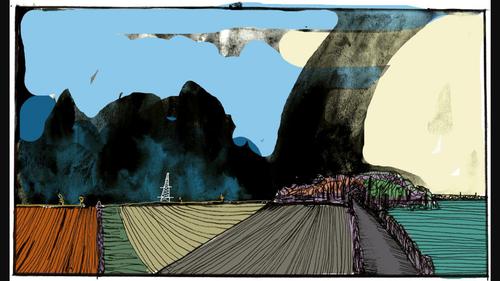Our official English website, www.x-mol.net, welcomes your
feedback! (Note: you will need to create a separate account there.)
Place-making in waterscapes: Wetlands as palimpsest spaces of recreation
The Geographical Journal ( IF 3.6 ) Pub Date : 2022-09-08 , DOI: 10.1111/geoj.12477 Mary Gearey 1
The Geographical Journal ( IF 3.6 ) Pub Date : 2022-09-08 , DOI: 10.1111/geoj.12477 Mary Gearey 1
Affiliation

|
This paper argues that acknowledging the wide diversity of current recreational practices on English wetlands enables governance practitioners and site managers to appreciate the full extent of contemporary human engagements with these watery ecosystems. These insights can assist those tasked with managing wetland resources to develop more inclusive and sustainable development plans to support a wide range of actors whose connections to wetland spaces are important for their health, wellbeing and sense of self. Enabling sustainable future uses of wetlands will involve recognising and engaging with differential articulations of place-making within these diverse waterscapes which themselves are in a constant state of transition. This calls our attention to the dynamic nature of wetlands, and the ways in which place-making in these spaces shifts and adapts to the changing topography and biota within these waterscapes; each encounter with the space is slightly reconfigured and recast every time. Wetlands' liminality also extends to the diverse and often esoteric uses of these ecosystems for recreation in its most encompassing sense; as leisure spaces, places of renewal and as locations of place-making practices. Drawing upon Barbara Bender's exploration of landscape as phenomenological palimpsest, this paper utilises empirical interview data drawn from a recent research project, ‘WetlandLIFE’, to explore how far contemporary human uses of wetlands engage with processes of restoration and reanimation. Making use of the different leisure narratives of the research participants across five English wetland sites, the paper explores the ways in which ‘place’ is differentially interpreted, enabled and enacted in these saturated spaces. These practises and performances can be functional, prosaic engagements with wetlands; painting, walking, photographing, sitting, reflecting. They can also be anarchic, counter-cultural and ‘delinquent’; wild-camping, raving, poaching, partying. The wide spectrum of behaviours and attitudes catalogued reveal the contested use and value of these waterscapes in contemporary contexts.
中文翻译:

水景中的场所营造:湿地作为娱乐场所
本文认为,承认当前英国湿地休闲活动的广泛多样性,使治理从业者和场地管理者能够全面了解当代人类与这些水生态系统的互动。这些见解可以帮助那些负责管理湿地资源的人制定更具包容性和可持续的发展计划,以支持广泛的参与者,这些参与者与湿地空间的联系对他们的健康、福祉和自我意识很重要。实现湿地的可持续未来利用将涉及识别和参与这些多样化的水景中不同的场所营造方式,这些水景本身处于不断的过渡状态。这让我们注意到湿地的动态性,以及这些空间中的场所营造如何转变并适应这些水景中不断变化的地形和生物群落;每次与空间的相遇都会稍微重新配置和重新塑造。湿地的界限还延伸到这些生态系统在其最广泛的意义上用于娱乐的多样化且通常深奥的用途;作为休闲空间、更新场所和场所营造场所。借鉴芭芭拉·本德(Barbara Bender)对景观作为现象学重文的探索,本文利用从最近的研究项目“WetlandLIFE”中提取的实证访谈数据,探讨当代人类对湿地的利用在多大程度上参与了恢复和再生过程。利用研究参与者在五个英国湿地地点的不同休闲叙述,该论文探讨了在这些饱和空间中对“场所”进行不同解释、启用和实施的方式。这些实践和表演可以是功能性、平淡无奇的湿地活动;绘画、行走、拍照、坐着、反思。他们也可能是无政府主义的、反文化的和“犯罪的”;野营、狂野、偷猎、聚会。分类的广泛的行为和态度揭示了这些水景在当代背景下的有争议的用途和价值。聚会。分类的广泛的行为和态度揭示了这些水景在当代背景下的有争议的用途和价值。聚会。分类的广泛的行为和态度揭示了这些水景在当代背景下的有争议的用途和价值。
更新日期:2022-09-08
中文翻译:

水景中的场所营造:湿地作为娱乐场所
本文认为,承认当前英国湿地休闲活动的广泛多样性,使治理从业者和场地管理者能够全面了解当代人类与这些水生态系统的互动。这些见解可以帮助那些负责管理湿地资源的人制定更具包容性和可持续的发展计划,以支持广泛的参与者,这些参与者与湿地空间的联系对他们的健康、福祉和自我意识很重要。实现湿地的可持续未来利用将涉及识别和参与这些多样化的水景中不同的场所营造方式,这些水景本身处于不断的过渡状态。这让我们注意到湿地的动态性,以及这些空间中的场所营造如何转变并适应这些水景中不断变化的地形和生物群落;每次与空间的相遇都会稍微重新配置和重新塑造。湿地的界限还延伸到这些生态系统在其最广泛的意义上用于娱乐的多样化且通常深奥的用途;作为休闲空间、更新场所和场所营造场所。借鉴芭芭拉·本德(Barbara Bender)对景观作为现象学重文的探索,本文利用从最近的研究项目“WetlandLIFE”中提取的实证访谈数据,探讨当代人类对湿地的利用在多大程度上参与了恢复和再生过程。利用研究参与者在五个英国湿地地点的不同休闲叙述,该论文探讨了在这些饱和空间中对“场所”进行不同解释、启用和实施的方式。这些实践和表演可以是功能性、平淡无奇的湿地活动;绘画、行走、拍照、坐着、反思。他们也可能是无政府主义的、反文化的和“犯罪的”;野营、狂野、偷猎、聚会。分类的广泛的行为和态度揭示了这些水景在当代背景下的有争议的用途和价值。聚会。分类的广泛的行为和态度揭示了这些水景在当代背景下的有争议的用途和价值。聚会。分类的广泛的行为和态度揭示了这些水景在当代背景下的有争议的用途和价值。









































 京公网安备 11010802027423号
京公网安备 11010802027423号